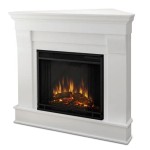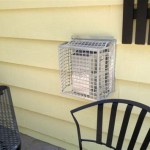Gas Fireplaces: An Efficient Heating Source
Gas fireplaces offer a combination of aesthetic appeal and practical heating capabilities, making them a popular choice for homeowners seeking supplemental or even primary heating solutions. Unlike traditional wood-burning fireplaces, gas fireplaces offer convenience, ease of use, and generally higher efficiency. This article explores the various aspects of gas fireplaces as a source of heat, delving into their functionality, efficiency ratings, different types, installation considerations, safety features, and maintenance requirements.
The primary function of a gas fireplace is to generate heat by burning natural gas or propane. The combustion process produces flames and radiant heat, which warms the surrounding area. Gas fireplaces are typically equipped with a ceramic or glass enclosure that allows the heat to radiate into the room while preventing direct contact with the flames. The heat output is measured in British Thermal Units (BTUs), which indicates the amount of energy required to raise the temperature of one pound of water by one degree Fahrenheit. A higher BTU rating signifies a greater heating capacity.
Understanding Gas Fireplace Efficiency
Efficiency is a crucial factor to consider when evaluating a gas fireplace for heating purposes. The efficiency rating indicates the percentage of fuel that is converted into usable heat. Gas fireplaces typically have efficiency ratings ranging from 70% to 99%. The higher the efficiency rating, the less fuel is wasted, resulting in lower energy bills and reduced environmental impact. The efficiency of a gas fireplace is influenced by several factors, including the type of fireplace, the design of the combustion chamber, and the presence of features such as a sealed firebox and a direct vent system.
Older, less efficient gas fireplaces often have open combustion chambers and rely on room air for combustion. These models tend to draw heated air from the room and exhaust it through the chimney, resulting in heat loss. Newer, more efficient models feature sealed combustion chambers that draw air from outside the home, minimizing heat loss and improving overall efficiency. Direct vent gas fireplaces are particularly efficient, as they vent exhaust gases directly to the outside through a sealed vent system, preventing the loss of heated air from the home.
The Annual Fuel Utilization Efficiency (AFUE) rating is a standardized measure of heating appliance efficiency, including gas fireplaces. It represents the percentage of energy consumed by the appliance that is actually converted into usable heat over the course of a year. A gas fireplace with a higher AFUE rating will generally provide more efficient heating and lower energy costs.
Types of Gas Fireplaces and Their Heating Capabilities
Gas fireplaces are available in a variety of types, each with its own characteristics and heating capabilities. These include:
- Gas Inserts: Designed to be installed into an existing wood-burning fireplace, gas inserts offer a convenient way to convert a traditional fireplace into a more efficient heating source. They typically feature a sealed combustion chamber and a direct vent system, maximizing efficiency and minimizing heat loss.
- Gas Logs: These are decorative logs designed to be placed in an existing fireplace. While they provide a realistic flame appearance, they are generally less efficient than gas inserts or freestanding gas fireplaces. They often lack a sealed combustion chamber and may not be suitable for primary heating purposes.
- Freestanding Gas Fireplaces: These fireplaces are designed to be installed as a standalone unit, typically against a wall or in a corner of a room. They offer a versatile heating solution and are available in a variety of styles and sizes. They are often equipped with a sealed combustion chamber and a direct vent system.
- Direct Vent Gas Fireplaces: These fireplaces vent exhaust gases directly to the outside through a sealed vent system, preventing the loss of heated air from the home. They are highly efficient and can be installed in a variety of locations, including interior walls without an existing chimney.
- Vent-Free Gas Fireplaces: Also known as ventless gas fireplaces, these models do not require a chimney or vent. They burn very cleanly and efficiently, but they require careful monitoring and compliance with local building codes. They may not be suitable for individuals with respiratory sensitivities.
The heating capabilities of a gas fireplace depend on its BTU rating and efficiency. A higher BTU rating indicates a greater heating capacity, while a higher efficiency rating signifies that more of the fuel is converted into usable heat. The type of gas fireplace also influences its heating performance, with direct vent and gas insert models generally offering the highest efficiency and heating output.
Installation and Safety Considerations
Proper installation is crucial for the safe and efficient operation of a gas fireplace. It is recommended to hire a qualified and licensed professional to install a gas fireplace, ensuring that it is connected to the gas line and vented properly. Improper installation can lead to gas leaks, carbon monoxide poisoning, and other safety hazards.
Before installing a gas fireplace, it is essential to check local building codes and regulations. Some jurisdictions may require permits for gas fireplace installations, and there may be restrictions on the type of fireplace that can be installed. It is also important to ensure that the gas fireplace is compatible with the existing gas supply and venting system.
Safety features are an integral part of gas fireplaces. Many models are equipped with a safety pilot system that automatically shuts off the gas supply if the pilot light goes out. This prevents gas from accumulating and potentially causing an explosion. Carbon monoxide detectors should be installed in the home to provide early warning of any carbon monoxide leaks. Regular maintenance, including cleaning the burner and venting system, is essential for ensuring the safe and efficient operation of the gas fireplace.
When selecting a location for a gas fireplace, it is important to consider safety and aesthetics. The fireplace should be placed away from flammable materials, such as curtains and furniture. It should also be located in a well-ventilated area to prevent the buildup of carbon monoxide. Consider the room's layout and desired heating pattern when choosing the fireplace's placement to maximize its heating efficiency.
In general, vent-free gas fireplaces require extra attention. They may be prohibited in some areas, and their usage demands vigilant monitoring for adequate ventilation. Carbon monoxide detectors are vital, and it's crucial to adhere to the manufacturer's instructions meticulously. Regular checks and professional servicing are recommended to ensure safe operation.
During operation, proper ventilation is essential. Ensure that rooms are adequately ventilated, especially when using vent-free models. Keep the area around the fireplace clear of obstructions. Never leave a gas fireplace unattended, particularly if there are children or pets in the home. Always follow the manufacturer's instructions for safe operation and maintenance.
Maintenance and Longevity of Gas Fireplaces
Regular maintenance is essential for ensuring the longevity and efficient operation of a gas fireplace. The frequency of maintenance depends on the usage of the fireplace and the manufacturer's recommendations. However, some general maintenance tasks should be performed regularly.
Cleaning the glass enclosure is important for maintaining a clear view of the flames and preventing the buildup of soot and debris. Use a glass cleaner specifically designed for gas fireplaces to avoid damaging the glass. Vacuuming the burner area and removing any dust or debris can help to ensure proper combustion. Inspecting the venting system for any obstructions or leaks is also crucial for safety and efficiency.
Professional servicing should be performed at least once a year to ensure that all components are functioning properly. A qualified technician can inspect the gas lines, burner, venting system, and safety features to identify any potential problems. They can also clean and adjust the fireplace to optimize its performance and efficiency.
The lifespan of a gas fireplace depends on several factors, including the quality of the fireplace, the frequency of use, and the level of maintenance. With proper care and maintenance, a gas fireplace can last for many years, providing reliable and efficient heating. However, it is important to address any problems promptly to prevent them from escalating and potentially causing more significant damage.
Addressing minor issues early can prevent costly repairs down the line. Listen for unusual noises, observe flame patterns, and be aware of any changes in the fireplace's performance. Promptly address any concerns to ensure the longevity and continued efficiency of your gas fireplace.
In conclusion, gas fireplaces represent a sophisticated and practical heating solution for homeowners. Their efficiency, versatility, and ease of use make them appealing alternatives to traditional wood-burning fireplaces. Understanding the various types, efficiency ratings, installation considerations, safety features, and maintenance requirements is essential for making an informed decision and ensuring the safe and efficient operation of a gas fireplace. By adhering to recommended maintenance schedules and prioritizing safety, homeowners can enjoy the benefits of a gas fireplace for many years to come.

Do Gas Fireplaces Heat A Room Contact The Flame Company Today

Heat Glo 6k Series Gas Fireplace Fireside Hearth Home

Kozy Heat Direct Vent Fireplace Bayport 41 Has Aesthetics And Value

Gas Fireplaces Offer Efficient Heating Choices

Heat Glo 6k Series Gas Fireplace Fireside Hearth Home

Heat Glo Cerona Gas Fireplace H2oasis

Can A Fireplace Heat Whole House

Enclosed Gas Fireplaces Jetmaster

Heat Glo 6k Series Direct Vent Gas Fireplace Hechler S Mainstreet Hearth Home Troy Missouri

Heat Glo True Built In Gas Fireplace








